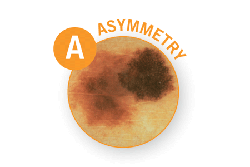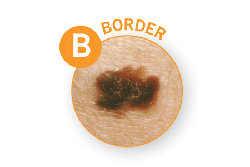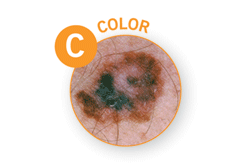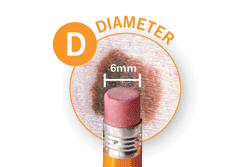Cancerous Moles Treatment
Cancerous moles can form anywhere on the body and are usually a form of melanoma, a type of skin cancer. They typically start out small and appear normal but can grow, turn colors or become irregular in shape. Spectrum Dermatology of Atlanta provides cancerous moles treatment and diagnosis in Alpharetta, GA.
Moles are usually harmless and require no treatment. Moles that change or become painful can be cancerous and require treatment. You should periodically check all the moles on your body for any changes and report any to your dermatologist at Spectrum Dermatology of Atlanta.
To help people find a possible melanoma on their skin, dermatologists created the ABCDEs of melanoma:

Most melanomas are asymmetrical, meaning the two sides do not appear the same.

Melanoma borders tend to be uneven and may have scalloped or notched edges.

Multiple colors are a warning sign.

It’s a warning sign if a lesion is the size of a pencil eraser (about 6 mm, or ¼ inch in diameter) or larger.

Any change in size, shape, color or elevation of a spot on your skin, or any new symptom in it, such as bleeding, itching or crusting, may be a warning sign of melanoma.
Spectrum Dermatology of Atlanta provides the most advanced, state-of-the-art treatment options for cancerous moles and/or melanoma lesions. Dr. Susan Spitzler and Dr. Emma Murad will design a custom treatment plan tailored to unique needs. They are also talented at mole removal surgical procedures that reduce scarring for a better appearance.
Melanoma Warning Signs, Symptoms
Melanoma can develop anywhere on the body, even in places not exposed to the sun. Aside from the moles described above, melanoma can also present as a dark lesion on mucus membranes, small lesions with irregular borders or larger brown spots with dark speckles. Dr. Spitzler or Dr. Murad will likely remove a skin sample from a lesion for further testing to determine the type and level of melanoma present.
They will also determine the stage of melanoma present by:
- Determining depth or thickness
- Evaluating if the melanoma has spread to the lymph nodes
- Advanced imaging to locate the presence of melanoma elsewhere in the body
Treatment is surgical removal with possible intervention from other specialists depending on the type of melanoma. Contact Spectrum Dermatology of Atlanta today for more information about cancerous moles and melanoma treatment in Alpharetta.

